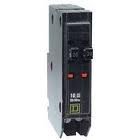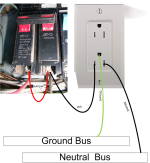aczlan
Good Morning
- Joined
- Mar 7, 2008
- Messages
- 17,540
- Tractor
- Kubota L3830GST, B7500HST, BX2660. Formerly: Case 480F LL, David Brown 880UE
Just be careful with those suicide cords. Don't leave them anywhere anyone can have access to them, especially kids. Someone thinking they are just an extension cord could be electrocuted.
I have made them and will use them if necessary, but I just make a short jumper, paint it bright red/orange to alert attention to the fact that it is something different, and keep it in a secure place.
Put a LOTO box on the end of the cord (both plugs into it if possible) and lock it. That will keep people out of it and remind you of what it is before you use it.
Aaron Z


